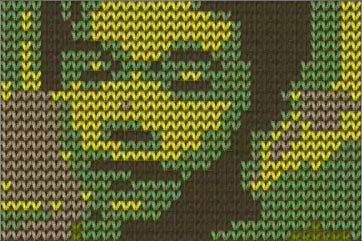This week we discussed the art style of Fibers, which really took me by surprise how innovative and unique the art is. Before the lecture I only thought of fibers as producing fabrics and sewing quilts. At the beginning when Professor Sarah was talking I was able to grasp the idea of what Fibers art is and understand how this type of art is so famous. I thought her presentation was very intriguing because I never really took attention to this kind of art before. For example in the first few slides of the presentation I was amazed about how something so tiny can produce these huge sculptures. It made me think about how fiber art is almost like the art of human life. What I’m trying to say is that all these piece of fiber are being put together to create this innovative and interesting art pieces. Just like how societies should strive to be, coming together to be a strong and happy community. Next she showed the art pieces of Claire Zeisler, and I thought she was genius. Her use of fibers made me also think about how great our society is when people work together. In the piece where it has these long pieces of bounded threads twisted carefully hanging from the ceiling and being untwined on the bottom.
My personal favorite, was Cat Mazzas, besides her Nike blanket (PICTURE),
her other knit pieces are phenomenal. I just found how she incorporated the skills and techniques of knitting into digital art. I find that a very creative and innovative combination that nobody would expect. In her animation she uses a lot of details that look like stitching. I find that very fresh and new that it puts a whole other side to what fiber art can be. The piece entitled Kintoscope Testimonies, where she interviewed people working within the labor union, but there faces were consisted of only these small x’s that resembled a (PICTURES) stitch.
Not only was it amazing how they were able to use only these x’s to create recognizable human faces. But, I was also amazed as how eye catching and urban it looked. Taking this very old-fashioned feel of knitting and reinventing it to give of a modern, hip look. She really redefined what fiber art is and can be.
Besides the presentation we also looked at two more artists, Ann Hamilton and Cai Guo-Qiang. I really enjoyed Cai Guo-Qiang’s work not only because it was eye-catching but also the messages he was able to portray visually. He took installation and fiber art to whole other level. When looking at his work it took me awhile to figure out how his art is related to fibers. Then it hit me, fibers don’t always have to be thread or clothe. Fiber art is taking any physical thing and putting them together in a way to create an art piece. It could be gunpowder like Qiang does in his drawings or even everyday supplies that were put together to make a huge airplane. His work really made me understand what fiber art has to offer. Like what Sarah said, these pieces are made to explore personal stories. Which makes sense to why they are so successful, these textiles are able to touch someone emotionally at a global perspective. The message is not as clear as iconography, but the more you engage into the more it starts to make sense and wow min 






